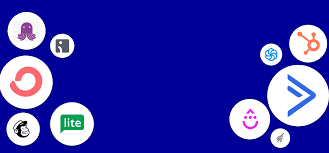Marketing intelligence can refer to a variety of things, and with so many platforms, data, and technology available these days, the phrase is used interchangeably. We’ll explain marketing intelligence in terms of artificial intelligence, competitive markets, and search marketing in this guide. We have also listed some marketing intelligence tools to help serve as a guide for you.
What Is Marketing Intelligence?
“Marketing intelligence” is everyday data that is useful to an organization’s marketing initiatives. Once gathered, this information can be examined and used to make educated decisions about competition behavior, products, customer trends, and market prospects.
Examples Of Marketing Intelligence
Examples of this include product design, market segmentation, customer lifetime, and campaign optimization.
Why Do We Need Marketing Intelligence?
You need it to serve as a guidepost for your team’s decisions. Marketers can acquire a holistic view of what is and isn’t working by gathering and analyzing contextual data on customer and industry trends and behaviors. This can provide organizations with a significant competitive advantage, educate them about their target audience, and provide insights into their various products.
This can also be used to set future goals. Setting specific targets in advance can help to increase the efficiency and scope of your marketing intelligence initiatives. Furthermore, explicitly describing the role you want this information to perform makes identifying the right data to pull across the media mix easier.
Types Of Marketing Intelligence
Marketers can obtain actionable intelligence using a variety of approaches. Let’s look at some of the most frequent methods for teams to obtain a deeper understanding of the market to which they’re aiming to sell:
#1. Focus Group
Focus groups entail hand-picking a group of people to produce a sample size of their target market. A moderator poses a series of predefined questions to participants in order to foster additional debate within the group. This enables marketers to acquire insight into their audience’s more complex viewpoints, allowing them to make more informed, nuanced judgments about future advertising.
#2. Polls
Polls, unlike questionnaires and surveys, often concentrate efforts on a particular question. As opposed to open-ended questions used in other approaches, Polls can be answered quickly and easily, resulting in a higher response rate.
#3. Field Tests
Field trials allow firms to evaluate multiple variables related to their product or branding by allowing marketing teams to experiment with new initiatives while avoiding advertising waste. New items, for example, may be tried in certain retailers, or new messaging may be applied to a specific geographic region. These efforts may be expanded to a bigger audience based on how well they operate on a smaller scale.
#4. Questionnaires
A questionnaire is another tool that marketers can use to reach a broad audience. It can assist marketers in gaining both qualitative and quantitative information about their customers and can be carried out both online and offline.
#5. Forms
Forms allow marketers to learn more about their target audience’s precise information, which is frequently associated with demographics. These are typically carried out by a researcher, with the intention of gaining more insights from objective data rather than a customer’s opinion or general comments.
#6. Mail Surveys
Mail surveys are an inexpensive approach to reaching a big number of people. While there has been a movement in recent years toward electronic resources, this strategy can still be beneficial for groups undertaking outreach in areas where access to technology is limited.
Ways to Gather and Improve Marketing Intelligence
To ensure that marketing intelligence can be successfully extracted from data across the marketing landscape, businesses can take the following steps to ensure that they are obtaining the relevant intelligence data, making educated conclusions, and fully using the insights generated:
#1. Recruit the Sales Team
Sales teams for both B2B and B2C audiences are in an advantageous position to support marketing intelligence activities. Because sales teams interact directly with customers and prospects, they frequently have firsthand knowledge of industry trends, competition strengths and weaknesses, and what clients need in a solution.
#2. Create a Customer Advisory Board.
Given the importance of direct engagement with consumers, marketing intelligence initiatives can be boosted by establishing a consumer advisory board. Organizations will be able to better understand prospect interests, issues, and wants as a result, allowing them to generate more impactful messages.
#3. Concentrate on Data Quality
Organizations can have access to a wide range of online and offline data throughout the marketing mix through agreements with external partners or third-party services that use such relationships. Consider the following high-quality data sources:
- Subscriber lists with geographic information
- Subscriptions to television and cable boxes that reflect ad reach and air time
- Data on radio broadcast range and zip code
- Data indicating engagements across third-party touchpoints and channels.
- Brand authority is measured using third-party studies and tools.
#4. Use a Proper Marketing Analytics Platform
Using a marketing analytics platform that goes beyond media mix modeling and marketing attribution will provide you with more insight into what your clients are responding to. Do they respond more to TV or social media advertising? Is there any creativity that your audience enjoys?
Marketers should look for a versatile marketing performance solution that can make these linkages while also adapting to market changes. This will ensure that teams make informed media strategy decisions in the future.
#5. Gather Customer Feedback
Reaching out to current customers provides a better insight into the public impression of marketing activities, customer experience, brand authority, product satisfaction, and other factors. Marketing efforts can be better focused on areas of strength using this information. Consider using polls, surveys, and feedback prompts to gain insights into customer perception and brand equity.
Artificial Intelligence Marketing
Artificial intelligence marketing (AI Marketing) is a technique for predicting your client’s next step and improving the customer journey by integrating customer data and AI principles such as machine learning.
Armed with big data insights, digital marketers may significantly improve the effectiveness and ROI of their initiatives with little more effort on their part. While this description provides a high-level overview of artificial intelligence marketing, there is clearly much more to it. All of the specifics will be covered in the following content.
Elements of Artificial Intelligence Marketing
Artificial intelligence marketing solutions help to bridge the gap between data science and implementation. The task of sorting through and analyzing massive amounts of data was formerly impossible, but it is now not only viable but also simple.
The elements of artificial intelligence marketing include:
#1. Big data
Big data is a rather simple idea. It refers to a marketer’s capacity to collect and segment massive amounts of data with little manual intervention. Marketing teams may then use this information to guarantee that the correct message is given to the right person at the right time via their preferred channel.
#2. Learning Machines
When marketers try to make sense of this massive data store, machine learning systems come in helpful. They can assist marketers in understanding the fundamental cause and likelihood of particular activities repeating by identifying trends or common occurrences and efficiently predicting common insights, responses, and reactions.
#3. Effective Solutions
Artificial intelligence marketing solutions comprehend the universe in the same manner that humans do. This means that the platforms can quickly find meaningful concepts and trends in massive data volumes. AI solutions can also perceive emotion and communication in the same way that humans do, allowing these platforms to understand open-form content such as social media, natural language, and email responses.
The Most Important Advantages of Artificial Intelligence Marketing
#1. Marketing ROI has increased.
Marketers may use AI to change their marketing campaigns by analyzing data and acting on it in real time. AI solutions may intelligently manage cash across channels, analyze high-performing ad placements, and boost the value of the marketing program. When utilized effectively, AI systems will boost marketing ROI by utilizing intelligent budget allocation and spending guidelines.
#2. Personalized Content Distribution
Marketers can take data and targeting to a whole new level using AI. Audience analytics can go beyond demographics to understand people on an individual level. Marketers may now utilize AI to discover new clients or purchasers as well as provide the most relevant content to them. This is especially useful for increasing retail and e-commerce effect. A clever marketer can accomplish almost anything with big data, machine learning, and AI.
#3. Improved campaign reporting and measurement
The huge amounts of data generated by today’s marketing initiatives might be challenging to organize and analyze. This makes it difficult for marketers to report on and demonstrate campaign performance. Marketers may use AI-powered dashboards to receive a full view of the campaign aspects that work, reproduce those patterns, and alter campaigns accordingly to experience enhanced marketing success. These solutions provide expanded reporting insights in addition to smart campaign analytics.
#4. Improved Marketing Team Efficiency
AI can analyze data far faster than humans. Allow artificial intelligence solutions to handle time-consuming activities, allowing your team to focus on what matters most – strategy. Marketers may utilize AI to make better campaign decisions and increase overall effectiveness by using real-time information.
Marketing Intelligence Tools
Some internet marketing intelligence software tools and strategies have become marketers’ best friends for identifying new prospects and boosting overall business strategy during the last few years.
A number of market intelligence tools are available to help you track and monitor several areas of your competitor. This could include your competitor’s website traffic and keywords, social media mentions, reviews, web rankings, backlinks, content, posts, site modifications, email strategy, technology, traffic sources, and so on. Some examples include:
- Crayon Intel Free
- Follow
- SimilarWeb.com – traffic from competitors
- Quantcast Measure
- SiteAlerts
- Fanpage Karma
- Klear
- SocialRank
- Visualping.
- Custodee
Search Marketing Intelligence Tools
A search marketing intelligence tool is a subset of a search engine marketing (SEM) tool. These major SEM platforms assist advertisers with the management and optimization of pay-per-click (PPC) campaigns on search engine results pages. Search marketing intelligence products, on the other hand, are more focused on providing organizations with sponsored search data and analysis. Competitive intelligence and sponsored search intelligence tools are other names for search marketing intelligence products.
Many search marketing intelligence solutions place a high priority on competitive keyword research and traffic analysis. However, the applications of these technologies go beyond competitive analysis. Marketers may use this information to assist in optimizing their existing PPC advertising, track where and how their brand appears in search results, and even forecast market trends and changes.
Search marketing intelligence solutions attempt to assist businesses and marketers in answering issues such as:
- Who are my main paid search rivals?
- How did we compare in terms of key terms on search results pages?
- Who are my competitors bidding on my brand terms?
- How can I improve the performance of my paid search campaigns?
- Which keywords am I gaining, losing, or overlooking?
- What market trends are emerging based on search behavior?
- How can I adapt my paid search ads to market changes?
Products for Search Marketing Intelligence
- Semrush
- SpyFu
- SimilarWeb PRO Version
- Nozzle
- iSpionage
- AppTweak
- The Search Engine Monitor
- Adthena’s Adgooroo
- Adthena
- Asodesk
Features of Search Marketing Intelligence Tools
Some search marketing intelligence solutions may concentrate on a single capability, such as competitor analysis, whilst others contain the majority of the following:
- Traffic study
- Keyword investigation
- Analysis of paid search performance
- Market trend analysis
- Optimization of search campaigns
- Analyze the competition
- Brand and trademark surveillance
Competitive Marketing Intelligence
Sales and marketing teams have traditionally used competitive intelligence to develop the “big picture” of rivals’ offers, consumer preferences, and the most promising differentiators for sales and marketing operations.
Competitive marketing intelligence advances this approach. In addition to providing a large picture of where your product or service stands in the market, competitive marketing intelligence digs deeper into the minutiae that drive marketing engagements and sales dialogues, such as:
- How customers interact with your competitors’ offerings.
- What matters most to your target audience and present consumers.
- Changing your messaging to reflect how your customers use your product.
- Identifying pain spots and interests to which you are uniquely qualified to speak.
The Importance Of Competitive Intelligence in Marketing.
Understanding your target audience and how to communicate with them is critical in marketing. Learning how your competitors talk to the same audience is part of the process. You can improve or better compete with your competitors by employing competitive intelligence and analysis in your marketing efforts.
Examples of competitive marketing intelligence and analysis tools include:
- Ad intelligence tools to better understand their pay-per-click and display ads.
- SEO tools to help you understand what keywords your competitors rank for.
- To understand target markets, use firmographic data and technological data techniques.
How to Collect Competitive Marketing Intel
What is the most efficient technique to collect technographic data and other in-depth consumer and competition insights? Make use of powerful competitive marketing intelligence tools. Sometimes all it takes is a good old-fashioned conversation.
- Discuss competitors with competitors
- Use market research tools and other competitive marketing intelligence data sources.
- Pay attention to your audience.
- Get Intricately Technographic and Spend Data
Three Ways to Use Competitive Marketing Intelligence
#1. Concentrate on the best deals for your pipeline.
A recent HBR article emphasizes this point: “Marketing analytics should shed light on the interactions that drive revenue — not just those that are easy to measure.” The idea is that, while time-consuming, listening to conversations, identifying prospect spending, and even talking to competitors will pay off big time. Similar to how data from phone talks can lead to better conversations in the future, data from market spend can lead to better conversations in the first place.
#2. Connect your sales talks to broad trends and specific pain areas.
The smart tech buyer has access to user reviews, documentation, content, and networks to help guide their purchasing decisions. You need data to obtain competitive marketing knowledge in order to stand out in your initial contacts with prospects. You can make a more persuasive case with spend data, for example: “You’re spending $x on this product. Do you see a true return on investment? “You may also use competitor marketing intelligence to demonstrate industry competence for the vertical into which you are selling.” That is essential when selling to CTOs and technical founders.
#3. Increase your rip and replace options.
You may receive direct insight into how customers spend with your competitors by using competitive marketing intelligence and expenditure data. Rather than skirting the ‘cost’ issue, you may talk directly about how your product can provide better value faster.
What Is The Difference Between Market Intelligence and Business Intelligence?
Business intelligence relates to data on a specific company, whereas market intelligence examines overall patterns. In general, business intelligence is information regarding the internal performance of a company.
What Does A Marketing Intelligence Analyst Do?
A marketing intelligence analyst:
- Determines and collects relevant customer, competitor, market, economic, financial, and/or operational data.
- Analyzes markets and rivals using financial, statistical, and qualitative data.
- Transforms data into actionable market and intelligence reports.
How can a business use marketing intelligence to inform decision-making?
Marketing intelligence can be used to inform decision-making by providing a clear understanding of the market, customers, and competition. This can help businesses to identify opportunities, to identify potential threats and challenges, and to develop effective strategies and plans. Additionally, marketing intelligence can be used to evaluate the effectiveness of marketing campaigns, measure ROI, and adjust strategies as needed.
How can a business use marketing intelligence to improve customer experience?
Marketing intelligence can be used to improve customer experience by providing a clear understanding of customer needs, preferences, and behavior. This can help businesses to develop products and services that meet customer needs, to tailor marketing messages to specific segments, and to create personalized experiences. Additionally, marketing intelligence can be used to identify and resolve customer pain points, improve customer service, and build stronger relationships with customers.
How can a business use marketing intelligence to identify new opportunities?
Marketing intelligence can be used to identify new opportunities by providing a clear understanding of market trends, growth, and segmentation. This can help businesses to identify new markets, to develop new products and services, and to identify potential partnerships and acquisitions. Additionally, marketing intelligence can be used to identify new channels for reaching customers and expanding into new geographic regions.
How can a business use marketing intelligence to improve marketing ROI?
Marketing intelligence can be used to improve marketing ROI by providing a clear understanding of the effectiveness of marketing campaigns and strategies. This can help businesses to optimize their marketing spending by identifying which channels and tactics are most effective and which are not. Additionally, marketing intelligence can be used to measure the impact of different marketing campaigns on sales, revenue, and customer acquisition, which can help to improve ROI by focusing on the most effective strategies.
How can a business use marketing intelligence to improve product development?
Marketing intelligence can be used to improve product development by providing a clear understanding of customer needs and preferences. This can help businesses to identify gaps in the market, to develop new products that meet customer needs and to improve existing products by making them more customer-centric. Additionally, marketing intelligence can be used to test new product ideas, validate market demand, and identify potential roadblocks before launching a new product.
How can a business use marketing intelligence to improve pricing strategy?
Marketing intelligence can be used to improve pricing strategy by providing a clear understanding of customer needs and preferences, as well as market trends and competition. This can help businesses to identify the optimal price points for different products and services, develop pricing strategies that align with customer value, and adjust prices as needed to respond to market changes and competitive pressures.
To summarize
On the one hand, proper marketing intelligence necessitates a large volume of data from the marketing landscape’s online, offline, and external regions. On the other hand, basing marketing strategy on strategies that lack correct intelligence places brands at odds with competitors and target audiences.
Frequently Asked Questions
What are the 4 types of market intelligence?
The 4 types of market intelligence include competitor intelligence, product intelligence, customer understanding, and market understanding.
What is the difference between market intelligence and market research?
Market research is the systematic collection and analysis of data related to a certain marketing plan. Market intelligence is information vital to a company’s markets that are gathered and analyzed in order to make informed judgments about things like market opportunity and commercial potential.
What is the difference between market intelligence and business intelligence?
Business intelligence monitors what your company is doing. Market intelligence monitors what everyone is doing.
Related Articles
- AI Marketing: Top 30+ Artificial Intelligence Marketing Tools
- Financial Intelligence: Babysteps to Proper Mastery (+ How to guide & Detailed courses)
- Top 11 Business Intelligence Software and Tools In 2023
- TOOLS FOR BUSINESS: How It Works and Free Tools For Business
- Business Intelligence Analyst: Job Description, Certifications & Salary In the US






